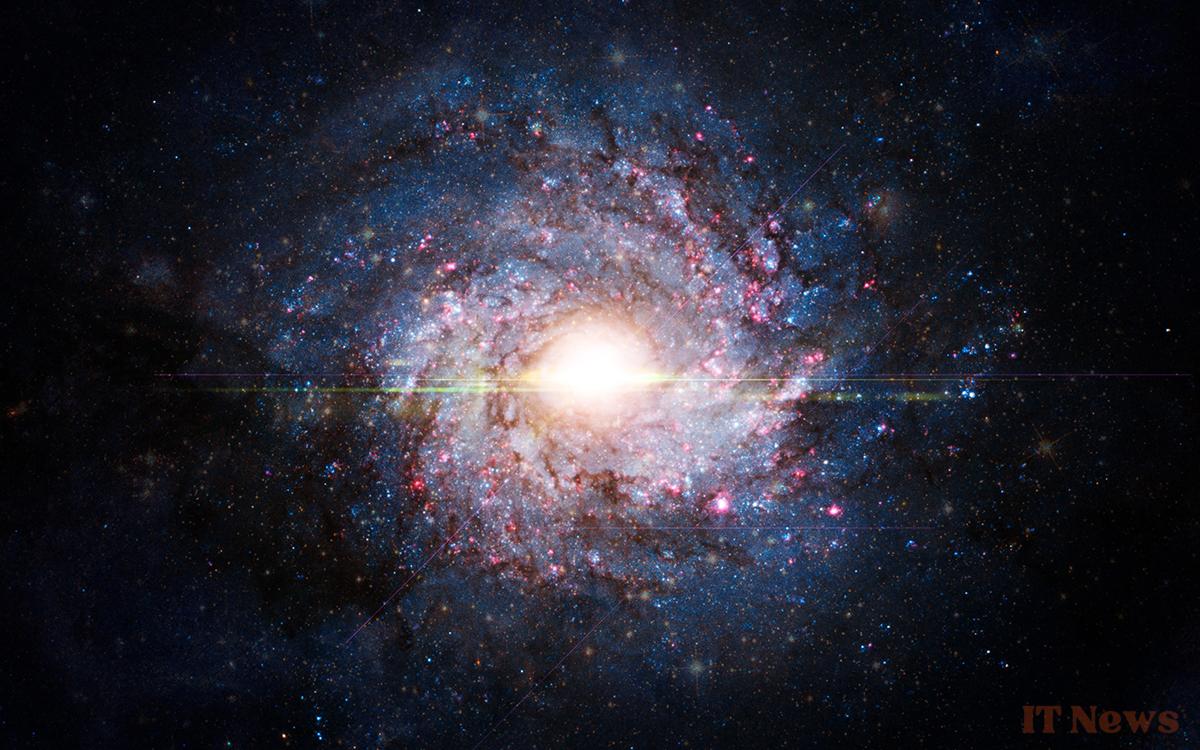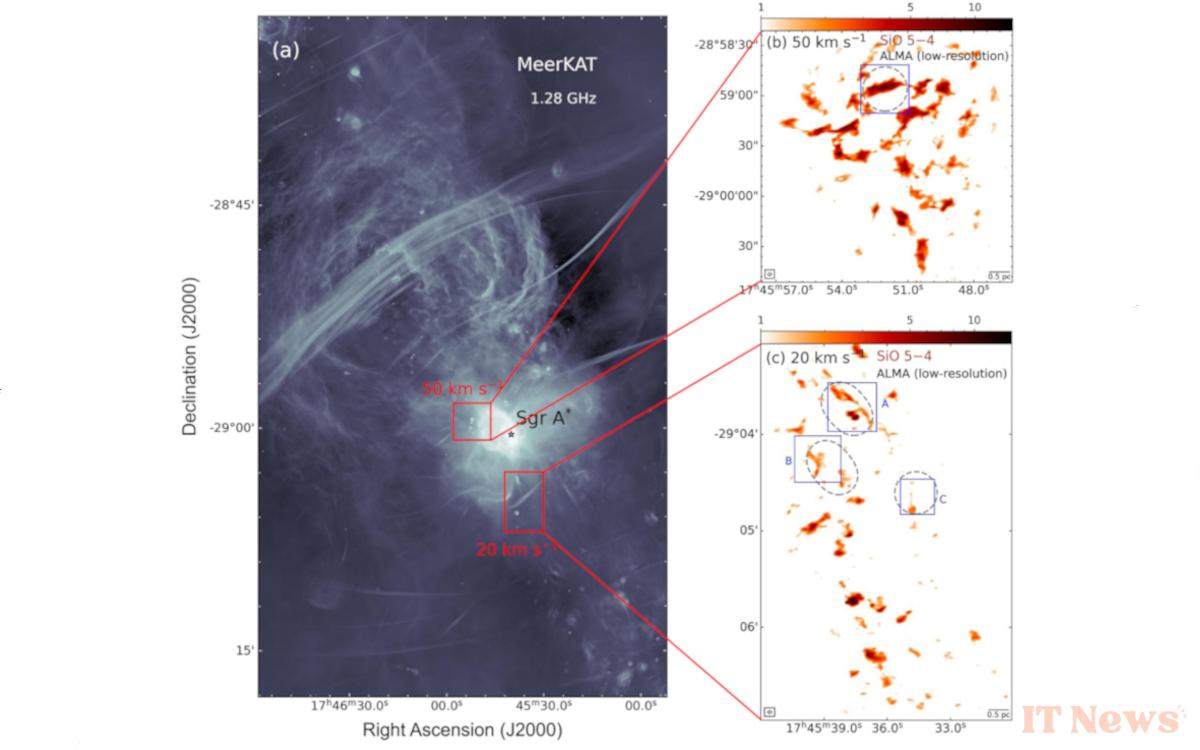An international team of astronomers has observed a completely new phenomenon in our galaxy. Using an ultra-powerful radio telescope, they have spotted strange, fast-moving filaments, comparable to tornadoes. These structures could play a key role in the circulation of matter around the black hole which is in its center.
The center of the Milky Way is a chaotic region and still largely unknown. Located around the supermassive black hole Sagittarius A*, this area is home to dense gas clouds, agitated dust, and violent shock waves. Despite numerous studies conducted in recent years, the mechanisms at play in this part of our galaxy remain difficult to explain. Astronomers regularly observe extreme phenomena there, but some details still elude their understanding.
Thanks to At the Atacama Large Millimeter/submillimeter Array (ALMA), a network of radio telescopes located in Chile, researchers recently discovered a new type of thin, elongated structure within this turbulent region. These filaments, nicknamed "space tornadoes," have no connection to star-forming regions. They appear under the effect of intense shock waves and form at extremely small, previously invisible scales. Their observation was made possible by ALMA's high resolution, capable of detecting details at on a scale of 0.01 parsec (3 billion kilometers, which is more than 20 times the distance between the Earth and the Sun).
These “space tornadoes” redistribute matter at the center of the galaxy
The researchers identified these filaments by analyzing the presence of silicon monoxide (SiO), a molecule that signals shocks in molecular clouds. Unlike previously known structures, these filaments are narrow, aligned, and do not emit any dust. They move rapidly in the central area and appear to participate in a matter renewal cycle. According to the team, these structures dissipate their energy by redistributing the molecules in the interstellar medium, before disappearing. Their appearance would be brief, but very effective in transporting matter.
The scenario envisaged is based on three stages: the shocks create the filaments, these release molecules into the gas, and then these molecules end up being deposited again on the dust grains. This cycle of depletion and replenishment could explain how matter circulates in the central region of our galaxy. Exactly how these tornadoes are born remains to be understood, but ALMA's first observations open a new avenue for exploring the workings of the Milky Way on a previously unattainable scale. Future observations could reveal whether these filaments are present throughout its center.
Source: A&A Volume 694, February 2025





0 Comments